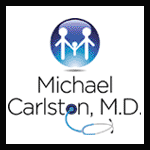Recent research is lengthening estimates of the time that antibiotics alter our internal ecology and consequently expanding medical concerns about the consequences of antibiotic overuse. The Swedish review of all published studies on the topic concluded that within one week of initiating antibiotic treatment, genes associated with antibiotic resistance reach high levels in the bacteria present in patients’ bodies with these changes persisting for two years. Although this degree of persistence is discouraging and in line with data collected for the last decade, unfortunately even the two year figure is not an endpoint. As the longest studies ended after two years, they could conclude there was a two year impact. They could not conclude that two years was the bounce back point. In other words, two years is a minimum.
I think the obvious conclusion at this time is that bacterial populations in our bodies are irrevocably altered by antibiotic use. There is no gyroscopic tendency to return to the preantibiotic state. The choice to use an antibiotic is a one way path. Antibiotics are important and useful drugs which I would never want to wish out of existence. However, these data add additional incentive to be extremely selective in their use. The consequences of not using them must be weighed against our growing recognition of their ill effects.
